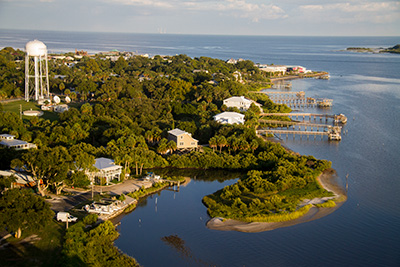Coastal Landscapes
More than three-quarters of Florida’s population lives in coastal counties. Gardening in these areas requires a little extra planning to deal with the winds, inescapable salt, and sandy high-pH soils.

The most important thing is to choose salt-tolerant plants, especially if you live within an eighth of a mile of the coast. These include vines such as bougainvillea, groundcovers like sea oats, and shrubs like wax myrtle.
Be sure to water your plants until they’re established, and as needed after that. Protect native plants already growing in your landscape, as they’re naturally adapted to coastal conditions.
You can create wind screens with fences, sturdy shrubs, or groups of trees. This will help protect your landscape plants from high winds, and create your personal oasis.
Plants for Your Coastal Landscape
One of Florida’s many charms is that no matter where you are, there’s likely to be a beach nearby. But this confluence of salty soil and sea spray does affect what plants will—and won’t—succeed. If you live close to the ocean, be sure to choose salt-tolerant plants for your landscape. Our salt-tolerant plant list is a good resource to get you started.
When selecting plants for your coastal site, consider your location’s USDA Hardiness Zone, too. Cold weather might impact tropical plantings in North and Central Florida (zones 7-9). Likewise, cold-hardy plants may not perform well in South Florida’s scorching summers (Zones 10 and 11). Light and soil are important factors to consider, too.
Plants installed within about one-eighth of a mile of saltwater coasts should be at least somewhat salt-tolerant. Salt-tolerant plants can have varying degrees of tolerance, so choose and place them carefully. Keep in mind that many native plants already growing on coastal lands are highly salt-tolerant, and could be incorporated into your landscape.
For more on coastal landscaping, contact your county Extension office.
